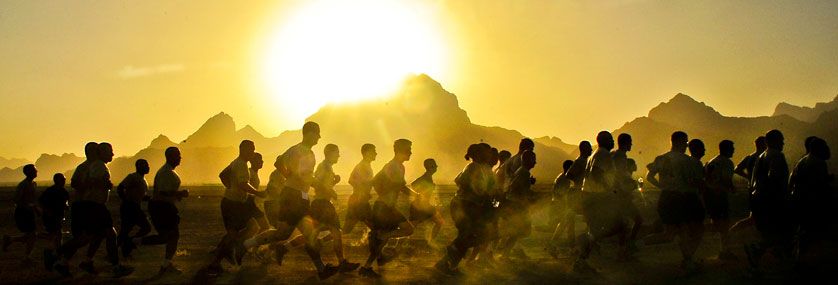Today, running has become the trendiest sport. Over the last five years, the number of people who have jumped on the running bandwagon has increased fivefold, and one of the reasons for this trend seems to be directly related to the economic crisis. "The equipment to practice this sport (compared to others) is cheap and simple, it allows to reconcile family and work life, since going out to run is not subject to a certain schedule and there is a contagion effect at a collective level", according to Alejandro Calabuig, director of Runners magazine.
If we analyze the economic data relating to sales of Running shoes during 2013, they speak for themselves: 2,274,074 million pairs sold, 850,000 pairs more than in 1997 (without counting the sales of El Corte Inglés and Decathlon, whose market share amounts to approximately 15%). A quarter of total sales were women's sneakers, while 20% of the models sold exceeded the 120 euro barrier, when the price of a sneaker of this type is around 66 euros, including sizes for boys and girls. In general terms, the running textile industry has a turnover of around 300 million euros in Spain, according to NDP Group.
Increase in popular races
The number of runners in Spain is around two and a half million, if we include both professional runners and those who run on average once a week. This fact has led to a significant increase in the number of popular races in our country. Since 2008, and without taking into account duathlons and triathlons, the number of races has increased by 50%, reaching the not inconsiderable figure of 3,300 in 2014.

The take-off of popular races took place in 2005 when participation "began to skyrocket like crazy," according to Raúl Fuentes, communications director of Last Lap, the company that organizes the San Silvestre , which is held on the last day of the year in Vallecas. This race is the perfect example to check the exponential growth that the event has had: from 5,000 runners 15 years ago it has gone to 40,000 participants in 2014, to which must be added another 15,000 who were left without a bib, due to the limit of runners imposed by the city council.
Today, the vast majority of popular races are financed by sponsors and the runners themselves, around which an industry of companies belonging to the field of marketing and sports equipment, event and travel organizers, etc. has been created and has proliferated.
Average expenditure per runner
A pair of running shoes, a pair of running pants and a running T-shirt, i.e. the basic equipment for running, costs on average about 100 euros. From there, you can add different clothing accessories such as thermal tights and T-shirts, windbreakers, compression stockings, etc. and also electronic devices such as heart rate monitors, GPS watches or Fitness Trackers that, although they make the running experience more satisfactory, also make it considerably more expensive, increasing the average cost per runner.
Participating in the aforementioned San Silvestre Vallecana costs each runner 20 euros. The price includes a T-shirt with its corresponding bib, a chip for timing, insurance, medical assistance during the race and checkroom service. If we take a look at the rest of the races held annually in Spain, we can verify that although their cost is not fixed, they almost always comply with the rule of one euro per kilometer.
Internationally, the average cost of participation, including race bib and accommodation in a European city can easily exceed 400 euros, an amount that can reach up to 3,000 euros in the case of participating in a marathon as prestigious as that of New York, where a bib can be sold for 600 dollars.
Read more news about: Running News

























